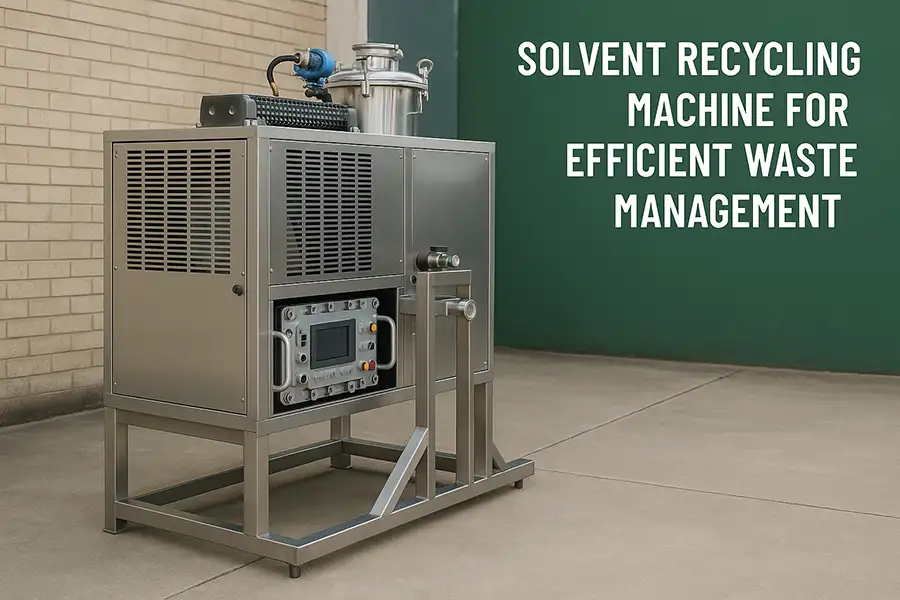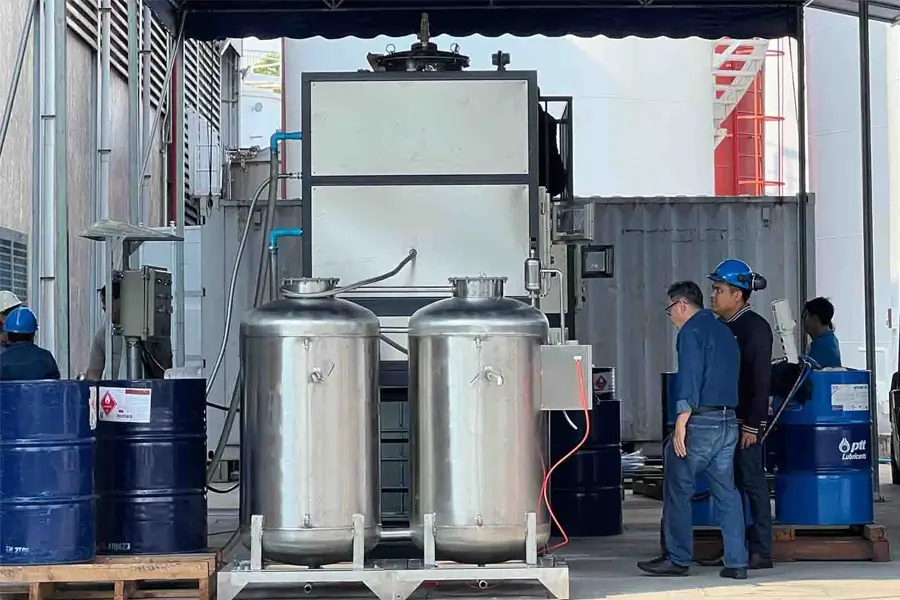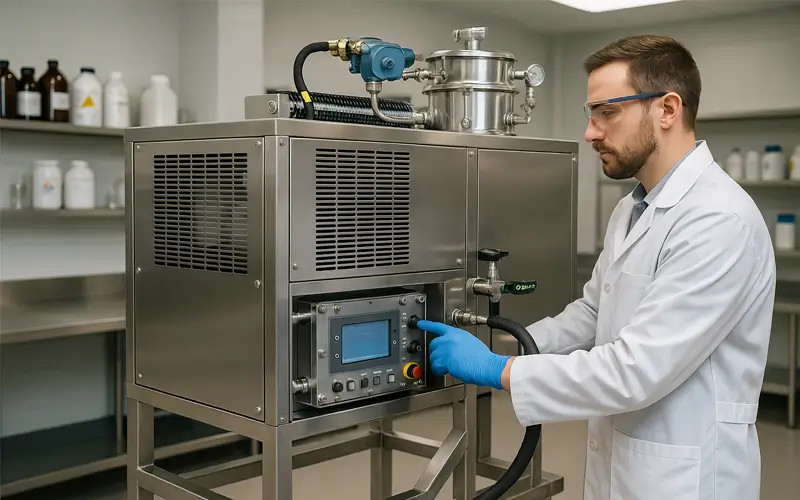Organic Solvent Waste Disposal: The Smart Way to Save Money & Planet
Discover how solvent recycling technology can transform your waste management process into a cost-saving, eco-friendly powerhouse. Stop pouring money down the drain!

Why Proper Solvent Disposal Matters
When your lab or workshop has excess used methanol, what's your first instinct?
Before you consider pouring it down the drain (which is illegal for most solvents), remember that methanol is highly toxic to aquatic life. Just 1 gallon of methanol waste can contaminate 500,000 gallons of water! Instead, explore safer disposal methods like distillation in a proper solvent recycling system or working with certified disposal services.
Environmental Hazards
Improper disposal of solvents like acetone, IPA, and toluene contaminates groundwater, harms wildlife, and contributes to air pollution. Many solvents take decades to break down naturally.
Legal Consequences
The EPA imposes heavy fines for improper solvent disposal - up to $75,000 per day per violation. Industries handling solvents must comply with RCRA regulations for hazardous waste.
Costly Mistakes
Companies spend thousands annually on commercial solvent disposal services. For larger operations, these costs can exceed $10,000/month - literally pouring money "down the drain".
Revolutionary Solution: Solvent Recycling Systems

How Solvent Recovery Magic Happens
Solvent recyclers use fractional distillation to purify contaminated solvents:
Contaminated solvent enters the still
Heat is applied at carefully controlled temperatures
Pure solvent vaporizes and condenses separately
Contaminants remain as residual sludge
The purified solvent (up to 99.5% pure) is collected ready for reuse
It's like having your own in-house purification plant - saving money on both purchase and disposal!
Saving Money Is The Last Word, And It Is Worth Investing In Buying!
According to MIT research, solvent recycling systems typically pay for themselves in 6-24 months. One automotive manufacturer reported $350,000 annual savings after investing in a solvent recycling system.
95%
Reduction in solvent purchase costs for manufacturers using recycling systems
98%
Decrease in hazardous waste shipped off-site after implementing solvent recyclers
60%
Average decrease in carbon footprint for businesses with solvent recovery programs
Do you spend more on buying new solvents than you pay staff?
For many businesses, solvent costs are their #1 material expense. Recycling lets you reuse solvents 10-20 times before final disposal. The EPA estimates businesses can save 50-90% of their solvent purchase costs through recycling. That's why solvent recycling is not just eco-friendly—it's a powerful financial strategy that directly improves your bottom line.
Handling Common Solvents Properly
| Solvent Type | Common Questions | Proper Disposal Methods |
|---|---|---|
| Methanol | How to dispose of methanol? Can methanol go down the drain? | Never pour down drains! Use certified disposal or recycle with a dedicated solvent recycling machine |
| Isopropyl Alcohol (IPA) | How to dispose of isopropyl alcohol? Can you pour isopropyl down the sink? | Safe to evaporate small amounts. For larger volumes, recycle or use authorized disposal center. IPA is highly recyclable! |
| Acetone | Specialized acetone recycling machine | One of the easiest solvents to recycle. Highly efficient recovery systems available. |
| Sulfuric Acid | How to get rid of sulfuric acid? How to dispose of sulfuric acid? | Requires special handling. Can be regenerated with proper industrial equipment. |
| Nitric Acid | Nitric acid disposal tips | Highly corrosive - must be neutralized or processed using specialized methods. |

Why Invest in a Solvent Recycling System?
Massive cost savings - Recover up to 95% of your solvent costs
Reduce waste disposal costs by up to 90%
Environmental compliance made easy
Improved workplace safety with reduced hazardous materials
Enhanced corporate sustainability profile
Learn how solvent recovery works and explore different system options to find the perfect solution for your operation.
Did you know that businesses generating less than 220 pounds of hazardous waste monthly qualify for less stringent regulation?
That's right! By implementing solvent recycling systems, many businesses can actually transition from "large quantity generator" to "small quantity generator" status, significantly reducing regulatory paperwork and compliance costs. A proper solvent waste management approach not only saves money but also simplifies your regulatory burden!
Ready to Transform Waste into Value?
Book your free consultation today and discover the right solvent recycling solution for your business.
Solvent Recycler Selection Guide
Choosing the right equipment depends on:
Solvent types you use
Monthly waste volume
Available space
Recovery purity requirements
Your budget
Our equipment range includes solutions for labs with just 5 gallons/week to industrial facilities processing thousands of liters monthly.
Explore our solvent recycler machines →Environmental Impact Matters
According to EPA data:
Industrial solvent use contributes ~5% to VOC emissions in the US
Recycling solvents reduces greenhouse gas emissions by up to 85% compared to producing new solvents
Every gallon of recycled solvent prevents 5-7 lbs of CO2 emissions
By investing in solvent recycling, you're not just helping your bottom line - you're contributing to a healthier planet for future generations.
Learn about environmental benefits →